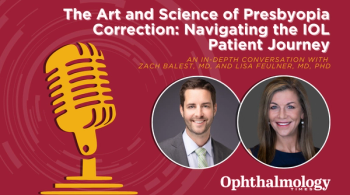
New treatment targets seasonal ocular allergic conjunctivitis
Fort Lauderdale, FL-Ophthalmic epinastine HCl is a new therapy for symptomatic relief of seasonal allergic conjunctivitis that is at least as effective and well tolerated as ketotifen fumarate (Zaditor, Novartis Pharmaceuticals, Duluth, GA), reported Stefano Bonini, MD, at the annual meeting of the Association for Research in Vision and Ophthalmology.
Fort Lauderdale, FL-Ophthalmic epinastine HCl is a new therapy for symptomatic relief of seasonal allergic conjunctivitis that is at least as effective and well tolerated as ketotifen fumarate (Zaditor, Novartis Pharmaceuticals, Duluth, GA), reported Stefano Bonini, MD, at the annual meeting of the Association for Research in Vision and Ophthalmology.
Epinastine HCl 0.05% ophthalmic solution is available in Europe as Relestat (Allergan, Irvine, CA) and in the United States as Elestat (Allergan and distributed by Inspire Pharmaceuticals, Durham, NC).
Epinastine, he explained, is a potent, non-sedating H1 antihistamine that also has affinity for the histamine H2 receptor. The drug, a mast cell stabilizer that prevents release of inflammatory mediators, has been shown to be efficacious and safe in conjunctival antigen challenge and environmental trials.
The study was conducted at sites in France and Italy. The patients in the control group were treated with ophthalmic ketotifen.
Fifty-one study patients received one drop per eye of epinastine twice daily for 14 days. Forty-eight control patients used ketotifen fumarate 0.025% ophthalmic solution.
Visual acuity was measured and slit-lamp examinations were performed at baseline, the day of treatment, and day 14. Ocular comfort was evaluated on the day of treatment, 30 minutes after the drops were instilled.
Newsletter
Don’t miss out—get Ophthalmology Times updates on the latest clinical advancements and expert interviews, straight to your inbox.


















































.png)


